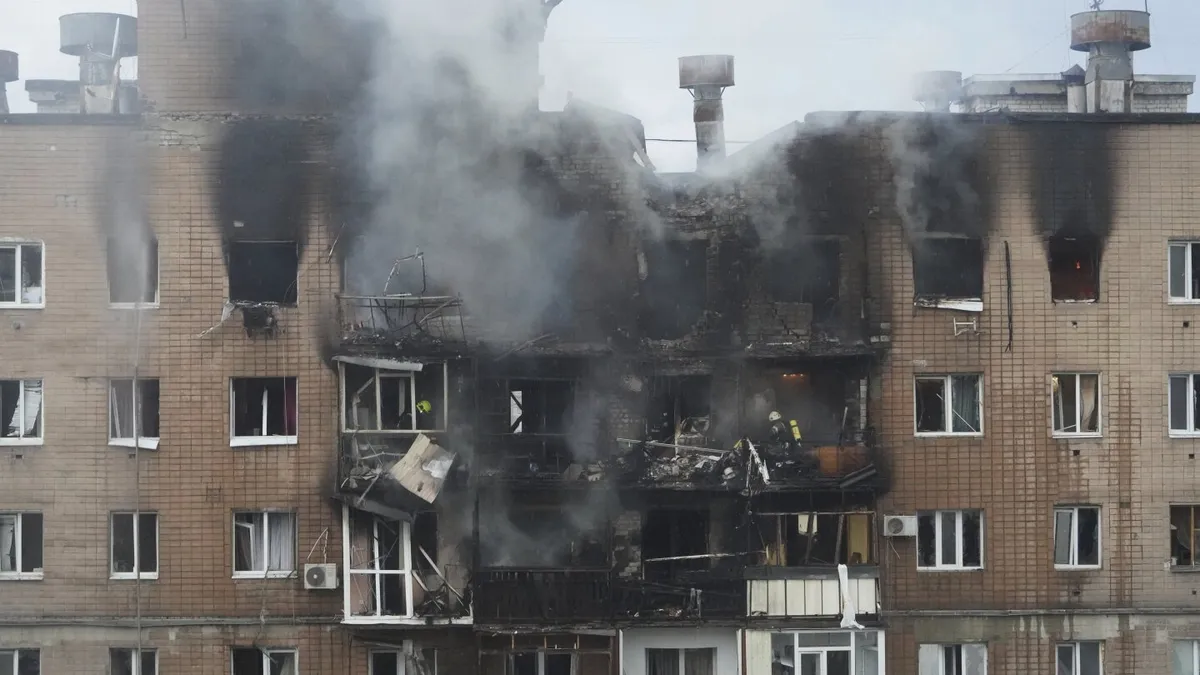
In a devastating escalation of violence, a large Russian drone-and-missile attack targeted Ukraine’s eastern city of Kharkiv on Saturday. Local officials have reported that this brutal assault resulted in the deaths of at least three individuals and left 21 others injured. The recent barrage forms part of a continuous wave of widescale attacks that have plagued Ukraine, intensifying fears that a peace agreement between the warring sides is increasingly out of reach.
The assault included aerial glide bombs, a weapon that has become synonymous with the fierce Russian onslaught throughout the ongoing three-year conflict. According to Ukraine’s Air Force, the attack included a staggering 215 missiles and drones launched overnight. In a display of their defensive capabilities, Ukrainian air defenses successfully shot down 87 drones and seven missiles during this latest onslaught.
Other regions of Ukraine were also affected, including Donetsk, Dnipropetrovsk, Odesa, and the city of Ternopil. Ukrainian Foreign Minister Andrii Sybiha emphasized the need for increased pressure on Moscow, stating, “To put an end to Russia’s killing and destruction, more pressure on Moscow is required, as are more steps to strengthen Ukraine.”
Kharkiv’s mayor, Ihor Terekhov, described the strikes as “the most powerful attack” on the city since Russia’s full-scale invasion began in February 2022. The assault not only claimed lives but also resulted in significant infrastructural damage, affecting 18 apartment buildings and 13 private homes. Regional governor Oleh Syniehubov reported that two districts in Kharkiv were struck by three missiles, five aerial glide bombs, and 48 drones, further illustrating the severity of the attack.
Among the injured were two children, a baby boy and a 14-year-old girl, highlighting the indiscriminate nature of the violence. In the Dnipropetrovsk province, two women aged 45 and 88 were reported injured due to the ongoing hostilities, according to local governor Serhii Lysak. Additionally, Russian shelling claimed the lives of a couple in their 50s in the southern city of Kherson, close to the front lines.
In a counter-claim, the Russian Defense Ministry reported that its forces shot down 36 Ukrainian drones overnight in southern and western Russia, including areas near the capital. They also noted that drone debris caused injuries to two civilians in the suburbs of Moscow. This reflects the increasingly chaotic nature of the conflict, with repercussions extending beyond Ukraine’s borders.
The day prior to the Kharkiv attack, Russia launched strikes in six Ukrainian territories, resulting in at least six fatalities and around 80 injuries. Among the deceased were three emergency responders in Kyiv, one person in Lutsk, and two individuals in Chernihiv.
A U.S.-led diplomatic initiative aimed at resolving the conflict has facilitated two rounds of direct peace talks between Russia and Ukraine, yet no significant breakthroughs have emerged. Both sides remain at an impasse regarding their terms for ending the fighting. Ukraine has proposed an unconditional 30-day ceasefire and a meeting between President Volodymyr Zelenskyy and Russian leader Vladimir Putin to negotiate a resolution. However, the Kremlin has effectively dismissed the idea of a truce and has not shown any willingness to compromise on its demands.
In a recent statement, U.S. President Donald Trump indicated that Putin had warned him of a potential response to Ukraine’s attack on Russian military airfields. Trump suggested that it might be beneficial to allow Ukraine and Russia to continue their conflict for a while before attempting to mediate peace. This shift in rhetoric marks a notable departure from his previous calls for an end to hostilities and suggests a potential waning of momentum in ongoing peace efforts.